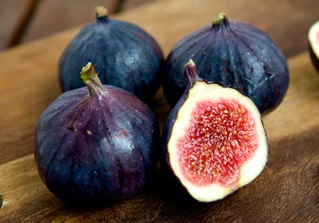by
Stepy —
December 17, 2018
- There is nothing like a fresh, juicy fig to delight your taste buds. Because the fig season is so short, fresh figs are hard to find.
- Fortunately, they are often sold dried and are available throughout the year.
- Let’s take a look at the benefits of figs.
- Blood pressure:
- Many people consume too much sodium, which is known to cause high blood pressure. Figs contain potassium, which is known to lessen the effects of sodium, therefore helping lower blood pressure. In the Dietary Approaches to Stop Hypertension (DASH) study, a group of participants who had a diet with high potassium showed lower blood pressure by an average of 5.5 points.
- Bone health:
- Figs are one of the fruits highest in calcium, which is a mineral that is essential for bone density. The potassium in figs may also help reduce loss of calcium in the urine, typically caused by high sodium diets.
- Postmenopausal breast cancer:
- Figs may be beneficial in postmenopausal women in the area of breast cancer risk. A study published by the International Journal of Cancer showed that postmenopausal who consumed more fruit fiber from sources like figs had a 34% reduction in breast cancer risk.
- Diabetes:
- One may not think that a fig leaf may have healing properties, but research shows that it can help with diabetes. Specifically in the area of reducing the amount of insulin an individual needs. A study from Spain showed that fig leaf extracts added to the cereal of diabetic patients showed an “insulin-lowering” effect.
- Heart health:
- Fig leaves may be good for the heart. In an animal study, fig leaves were shown to lower levels of triglycerides in the blood. Triglycerides are the main constituents of natural fats and oils, and high concentrations in the blood may indicate an elevated risk of stroke and heart problems.
- Weight loss:
- Figs are an excellent source of dietary fiber, providing 14.6g per cup, which is 58% of the recommended daily value.
- Fiber facilitates digestion and helps us feel full, so we will eat less.
- Note: None of the information in our website is intended to diagnose, treat, cure or prevent any illness or disease. The content on our website is for educational purposes only.
- REFERENCES:
- 1. “Dietary Fiber Intake and Risk of Postmenopausal Breast Cancer Defined by Estrogen and Progesterone Receptor Status–a Prospective Cohort Study among Swedish Women.” National Center for Biotechnology Information. U.S. National Library of Medicine, n.d. Web. 25 Sept. 2013.
- 2. “A Clinical Trial of the Effects of Dietary Patterns on Blood Pressure — NEJM.” The New England Journal of Medicine. The New England Journal of Medicine, 17 Apr. 2011. Web. 25 Sept. 2013.
- 3. “Potassium and High Blood Pressure.” Heart.org. American Heart Association, n.d. Web. 25 Sept. 2013.
- 4. “Analysis for Figs, Dried, Uncooked.” Self Nutrition Data. Self Nutrition Data, n.d. Web. 25 Sept. 2013.
- 5. “Hypoglycemic Action of an Oral Fig-leaf Decoction in Type-I Diabetic Patients.” National Center for Biotechnology Information. U.S. National Library of Medicine, n.d. Web. 25 Sept. 2013.
- 6. “Hypotriglyceridaemic Activity of Ficus Carica Leaves in Experimental Hypertriglyceridaemic Rats.” National Center for Biotechnology Information. U.S. National Library of Medicine, n.d. Web. 25 Sept. 2013.



















Pingback: Health benefits of persimmons - Step Into My Green World | STEPin2